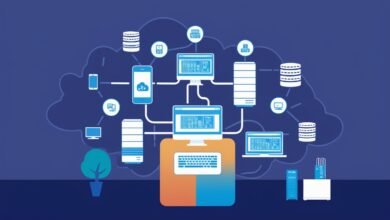What is NLP (Natural Language Processing)?

What is NLP (Natural Language Processing)?
Discover what NLP (Natural Language Processing) is, its applications, techniques, and the future of this exciting field. Understand how NLP is revolutionizing technology and everyday life.
Introduction:
Natural Language Processing (NLP) is a fascinating field at the intersection of computer science, artificial intelligence, and linguistics. It involves computers’ ability to understand, interpret, and generate human language in a meaningful and useful way. From chatbots and virtual assistants to language translation and sentiment analysis, NLP has a wide range of applications that are transforming the way we interact with technology.
The Basics of NLP (Natural Language Processing)?
What is NLP (Natural Language Processing)?
NLP stands for Natural Language Processing, a branch of artificial intelligence that focuses on interacting with computers and humans through natural language. The ultimate goal of NLP is to read, decipher, understand, and make sense of human languages in a valuable manner.
History of NLP:
The history of NLP dates back to the 1950s when Alan Turing published his seminal paper “Computing Machinery and Intelligence,” which proposed what is now known as the Turing Test as a criterion of intelligence. Early NLP systems were based on complex sets of hand-written rules. Over the years, NLP has evolved significantly, with the advent of machine learning and deep learning techniques leading to more sophisticated and accurate models.
Critical Components of NLP:
Syntax and Semantics:
Syntax refers to arranging words and phrases to create well-formed sentences in a language. In NLP, syntax is used to analyze the grammatical structure of sentences. Semantics, however, deals with the meaning of words and how these meanings combine in sentences. Both syntax and semantics are crucial for accurately understanding and generating human language.
Morphological Analysis:
Morphological analysis involves the study of words’ structures. NLP is used to understand and generate various forms of words through processes such as stemming and lemmatization.
Core Techniques in NLP:
- Tokenization:
Tokenization is the process of breaking down text into smaller units called tokens. These tokens can be words, phrases, or even characters. Tokenization is often the first step in the text preprocessing pipeline. - Part-of-Speech Tagging:
Part-of-speech (POS) tagging involves marking words in a text as corresponding to a particular part of speech based on both their definition and their context. This helps in understanding the grammatical structure and meaning of sentences.
Advanced NLP Techniques:
- Named Entity Recognition:
Named Entity Recognition (NER) is a technique for locating and classifying named entities mentioned in unstructured text into predefined categories, such as person names, organizations, locations, expressions of times, quantities, monetary values, percentages, etc. - Sentiment Analysis:
Sentiment analysis, also known as opinion mining, determines the emotional tone behind a series of words used to understand the attitudes, opinions, and emotions expressed within an online mention. - Machine Translation:
Machine translation is applying NLP to translate text from one language to another automatically. Technologies like Google Translate are examples of machine translation systems.

Applications of NLP:
- Chatbots and Virtual Assistants:
NLP is the backbone of chatbots and virtual assistants like Siri, Alexa, and Google Assistant. These systems use NLP to understand and respond to user queries in natural language. - Language Translation Services:
Services like Google Translate and Deeply use advanced NLP techniques to provide real-time language translation, breaking down language barriers worldwide.
NLP in Everyday Life:
- Email Filters:
Email system spam filters use NLP to analyze and filter out unwanted messages based on their content. - Social Media Monitoring:
NLP monitors and analyzes social media posts for sentiment analysis, helping brands understand public perception and respond accordingly.
Challenges in NLP:
- Ambiguity and Context:
One of the biggest challenges in NLP is dealing with the ambiguity and context of human language. Words can have multiple meanings, and the context in which they are used can drastically change their interpretation. - Language Variability:
Human language is highly variable and constantly evolving, which makes it difficult for NLP systems to keep up with new words, slang, and idiomatic expressions.
The Future of NLP:
- Integration with Other AI Technologies:
NLP is increasingly integrated with other AI technologies, such as computer vision and robotics, leading to more advanced and versatile applications. - Ethical Considerations:
As NLP systems become more powerful, ethical considerations regarding privacy, bias, and the potential misuse of technology are becoming increasingly important.
Conclusion:
Natural Language Processing (NLP) is a rapidly advancing field that is transforming how we interact with technology. From chatbots to language translation and sentiment analysis, NLP has many applications that make technology more accessible and intuitive. As NLP continues to evolve, it promises to bring even more innovative solutions to everyday challenges. Still, it also requires careful consideration of ethical implications to realize its benefits responsibly.

FAQs
What is Natural Language Processing (NLP)?
NLP is a branch of artificial intelligence that focuses on the interaction between computers and humans through natural language. It aims to enable computers to understand, interpret, and generate human language.
How does NLP work?
NLP uses various algorithms and models to analyze and understand human language. This involves tokenization, part-of-speech tagging, named entity recognition, and sentiment analysis.
What are some typical applications of NLP?
Typical applications of NLP include chatbots, virtual assistants, language translation services, email filters, and social media monitoring tools.
What is the difference between syntax and semantics in NLP?
Syntax refers to the grammatical structure of sentences, while semantics deals with the meaning of words and sentences. Both are crucial for accurately understanding and generating human language in NLP.
What is sentiment analysis in NLP?
Sentiment analysis is the process of determining the emotional tone behind a series of words used to gain an understanding of the attitudes, opinions, and emotions expressed in the text.
What are the challenges of NLP?
Challenges in NLP include dealing with the ambiguity and context of human language and keeping up with its variability and evolution.




